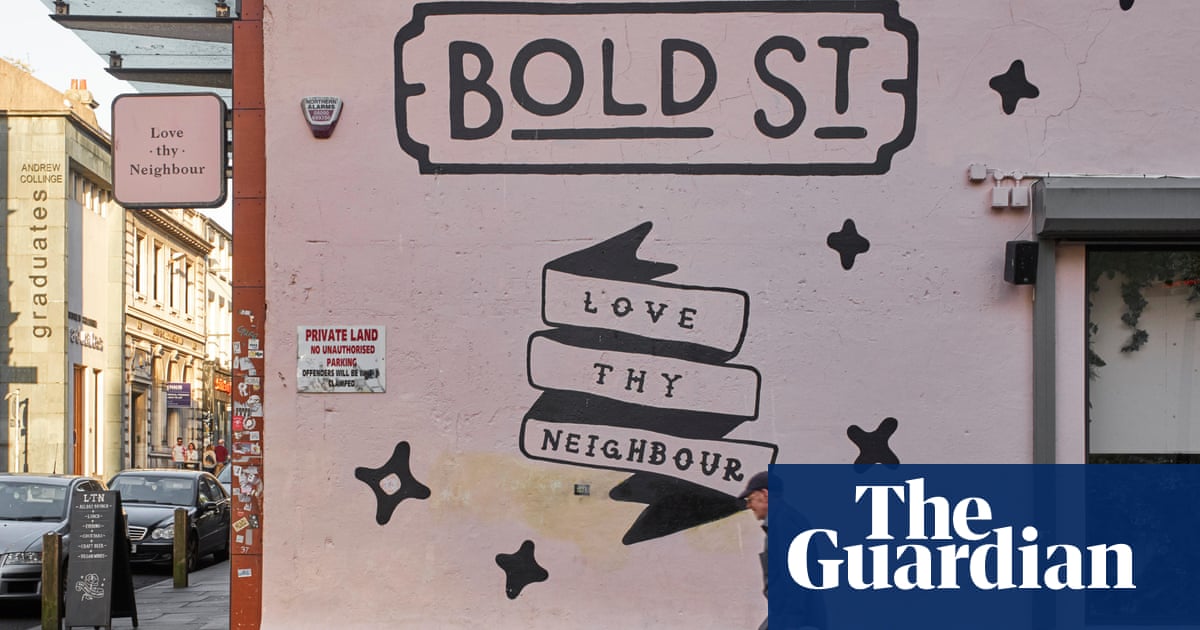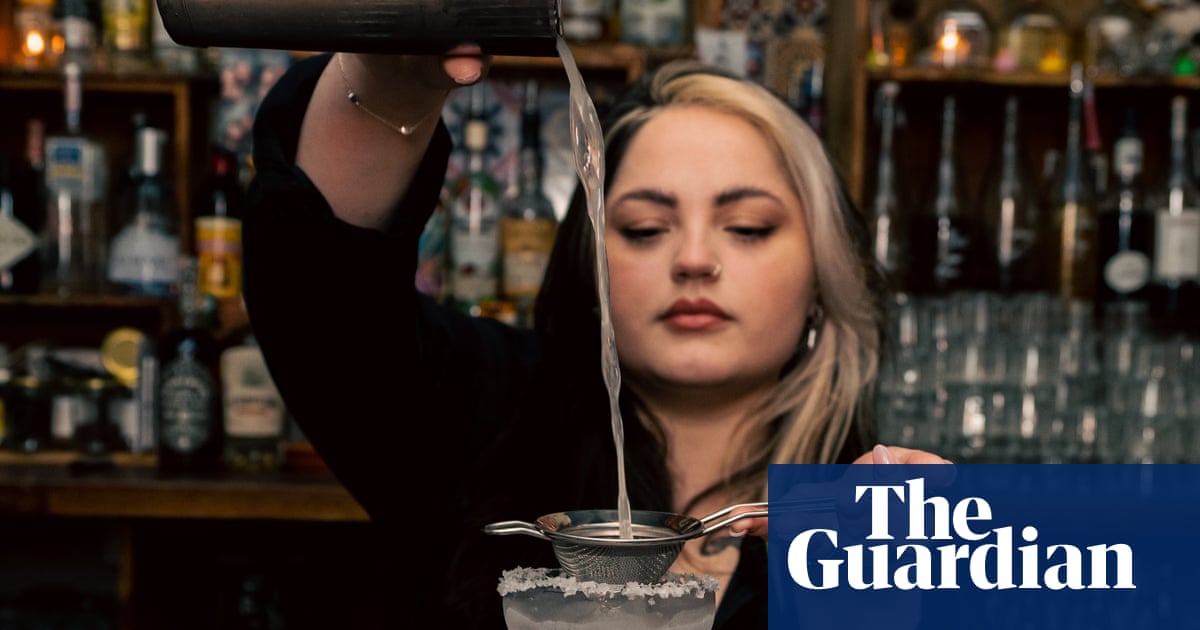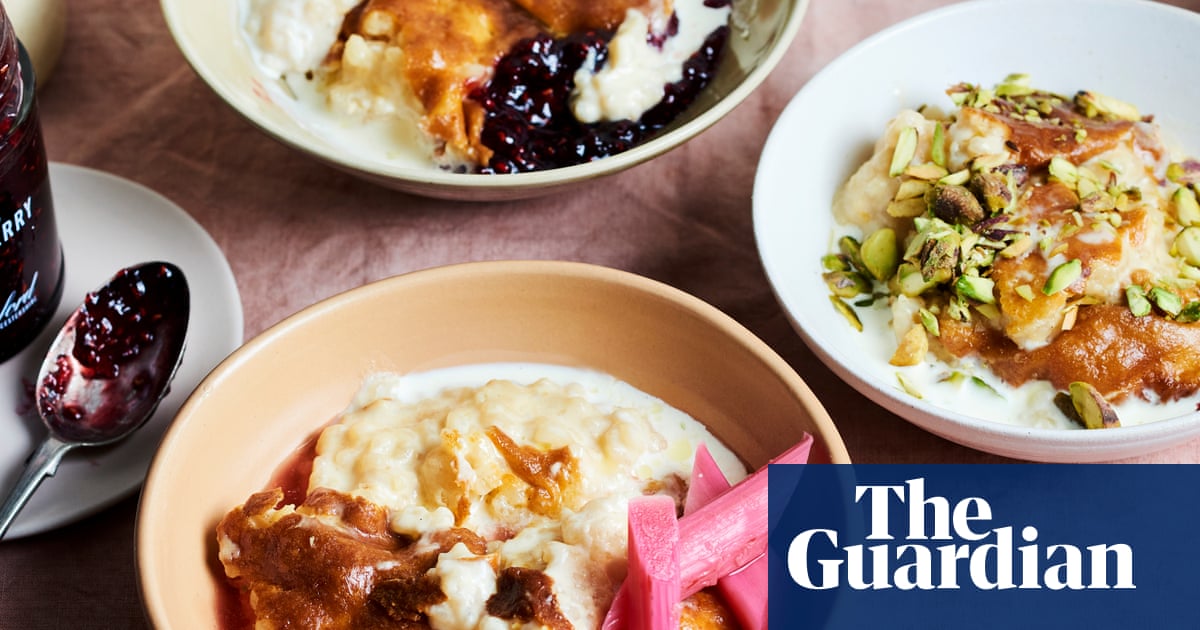
Many visitors come to Liverpool for its football or music heritage. But away from those obvious attractions, it has exciting food and drink, unique cultural institutions and a dynamic nightlife and live music scene that stays true to the city’s legacy.
Food
The city centre food scene is at its best on Bold Street, with its independent shops and restaurants. Chairs and tables now fill the pedestrianised street during warmer months – a happy addition from pandemic times – and St Luke’s Bombed Out Church provides a cool backdrop. Bakchich (mains from £11) offers Lebanese and Moroccan food, and the welcoming and attentive staff live up to these countries’ reputation for hospitality. There’s shakshuka and shawarma, hot and cold meze, colourful plates of couscous, and warming tagines.
A short walk from Bold Street is Duke Street Food and Drink Market, an industrial-chic food hall that’s home to six kitchens and an independent restaurant, Barnacle. Ginger serves Asian-inspired dishes such as Korean salmon bibimbap, while Cahita’s speciality is Latin American street food – its Cubano sandwich is a thick stack of pork shoulder, roast ham, pickle, mustard and gouda cheese.
Smithdown Road, south-east of the centre, has become a dining destination in recent years. Belzan is a neighbourhood bistro that makes the most of simple, seasonal ingredients. The regularly changing menu might include melt-in-the-mouth Guinness rarebit potato or smoked beetroot with tahini and whipped sheep’s yoghurt. It also has a range of natural wines by the glass.
Drink
From relaxed pubs to speakeasies and chic cocktail bars, Liverpool has a slew of independent drinking venues. Hopping from one to another is easy in the relatively compact centre: most pubs and bars are in the trendy, cobbled Ropewalks neighbourhood. Ye Cracke is a proper backstreet boozer frequented by John Lennon and his art school friends in the 1950s, with a craft beers, spontaneous acoustic music and a proud certainty about its political leanings. On Slater Street, one of Liverpool’s main party streets, The Merchant is a blend of bar, canteen and garden, suited to casual drinks, but also to grand nights out, with DJs playing till 3am against tastefully decaying walls. McGuffie & Co was Liverpool’s leading chemists for more than 200 years; now, whether your medicine is beer, inventive cocktails (from £8.50) or fancy wines, you’ll find a prescription in this sleek cocktail lounge.
Culture
Liverpool has raised its cultural game since 2008 when it was European capital of culture, with a range of world-class museums, art galleries and theatres. The Maritime Museum and The Beatles Story aside, lesser-known cultural spaces worth seeking out include Open Eye Gallery on Albert Dock: it’s the only dedicated photography gallery in the north-west of England. Its archive holds work from more than 100 photographers, mainly portraits and documentary. Open Eye also runs free exhibitions in spaces around the city, focusing on local communities.
St Luke’s Bombed Out Church was damaged during the 1941 Liverpool blitz and has stood roofless ever since. After lying derelict for more than 60 years, it has been reborn as a cultural space for theatre, dance, cinema, visual arts and spoken word performances, as well as events such as local craft markets. Bluecoat is a contemporary arts centre in a Grade I-listed 18th-century building. It hosts exhibitions and music, dance, literature and art events; there are also independent retailers on site, including vintage records stores and handmade gift shops. The Foundation for Art and Creative Technology (Fact) is a multipurpose space combining a cinema, an art gallery and a research centre. Catching an arthouse film before meandering around cutting-edge art exhibitions is a good way to spend a rainy Liverpool day.
Nightlife
Liverpool has always been synonymous with a great night out and its music scene continues to excite. In the North Docks area, Meraki is converted taxi garage between derelict warehouses and hosts an array of independent artists and genres, from postpunk to hip-hop and spoken word. Kazimier Stockroom is part of Invisible Wind Factory, a multidisciplinary arts, music and live events venue. Unlike its famous big sister, it feels intimate, with a 100-person capacity, and showcases emerging artists and local musicians. Round the Corner, in Liverpool’s Fabric District, is all about grassroots music: craft cocktails in its rooftop bar, might come with anything from a single launch to a comedy open mic night.
Neighbourhood
A five-minute walk south of the centre is the Baltic Triangle. During Liverpool’s heyday in the 18th and 19th centuries, this area was home to large timber warehouses storing wood from Scandinavia, hence the name. The surviving warehouses and factories have been transformed over the past decade into a hub for creative indie startups. Red Brick Market, a treasure trove of antiques, vinyl, retro, hand-crafted, salvage and more, is a great place to while away an afternoon. Baltic Market is a cavernous food court with global street food vendors, such as Little Furnace for wood-fired pizza, Christakis for souvlaki or Spice Thai for drunken noodles. More upmarket is Manifest, serving modern British fare such as beer-cooked Shetland mussels and roast venison loin. The restaurant, under chef Paul Durand, was recommended in the Michelin Guide within six months of opening.
There are also plenty of drinking establishments in the neighbourhood, such as the quirky, trinket-filled Hobo Kiosk and the well-known Baltic Fleet, where sailors from around the world quenched their thirst for the best part of 200 years. Local breweries to try include Cains, for handcrafted ales and hoptails, Black Lodge for craft beers, and Love Lane for a range of ales plus gins from The Ginsmiths of Liverpool. The area transforms into a buzzing nightlife destination thanks to live music venues such as 24 Kitchen Street, Camp and Furnace, Content Liverpool and Hangar 34, catering for tastes from indie folk and alternative rock to house.
Stay
Lock & Key (doubles from £71) is a converted Georgian townhouse on Duke Street, offering boutique rooms that blend period style with botanical wallpapers, velvet headboards and marble bathrooms. It’s a short stroll from the Waterfront, the Baltic Triangle and the Georgian Quarter. A former Victorian bank, 62 Castle Street (doubles from £65), is a 10-minute walk from Lime Street station.












